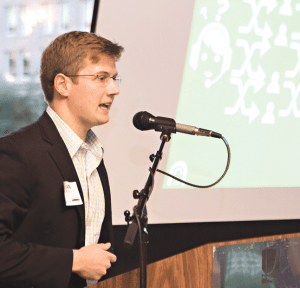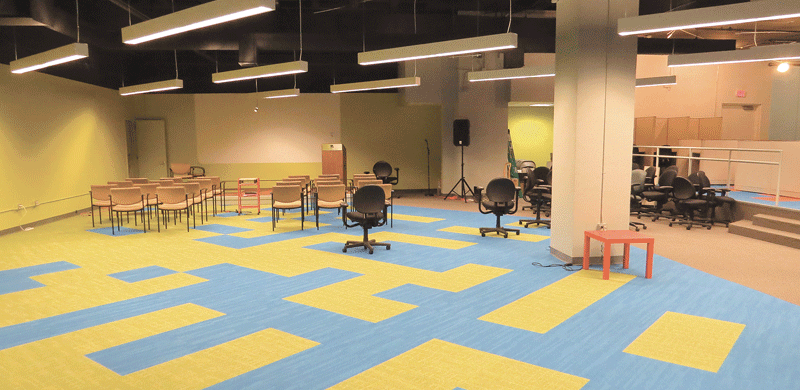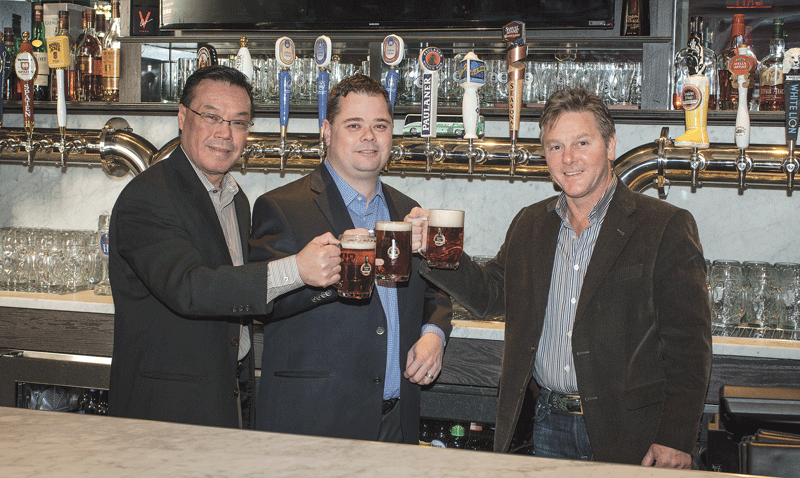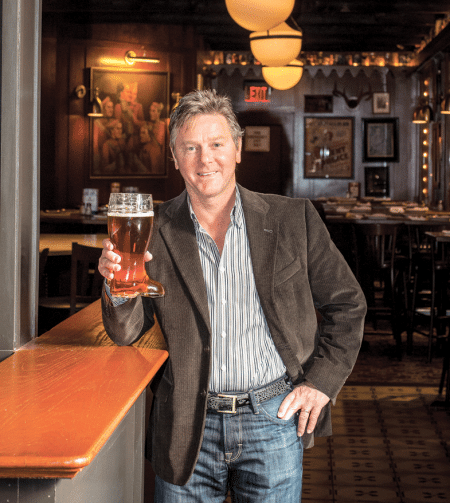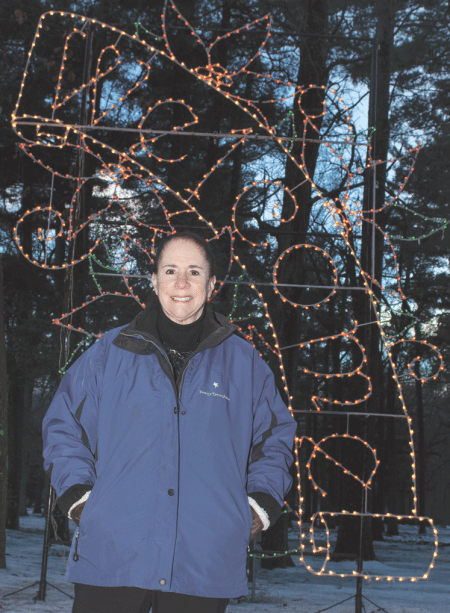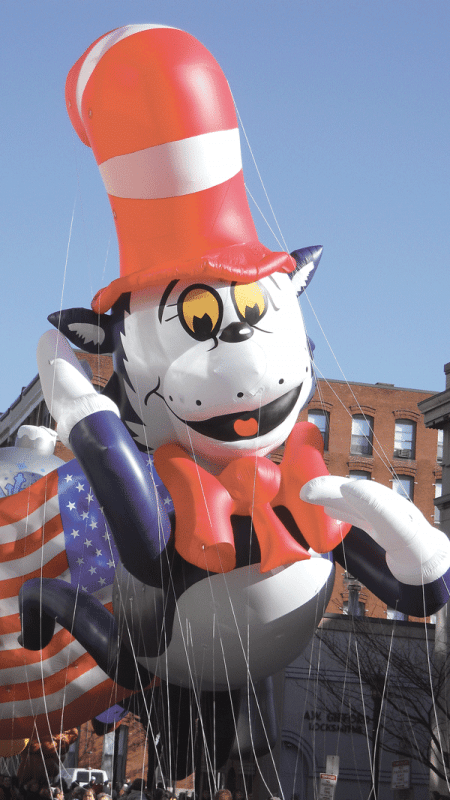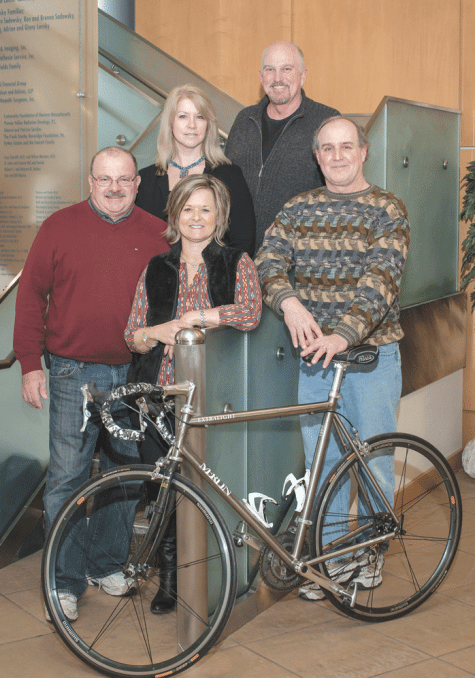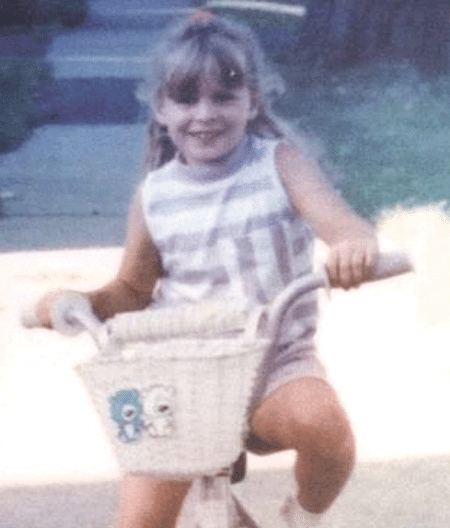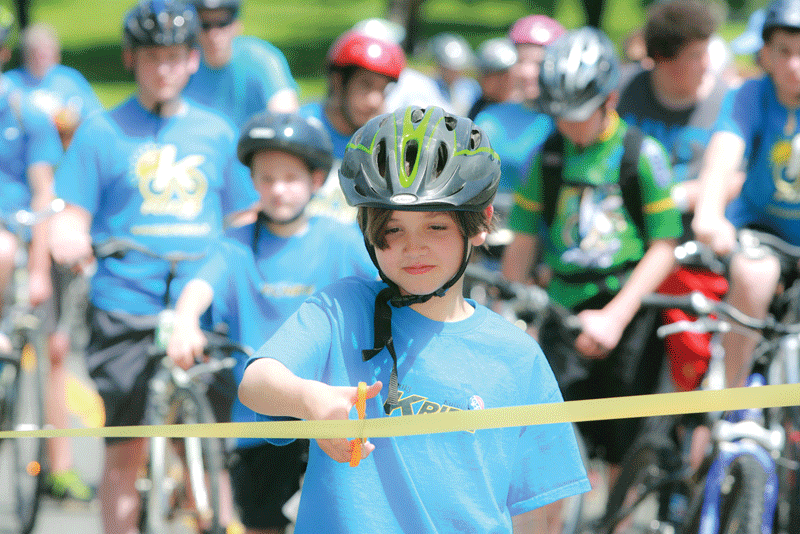Company’s Contributions to the Region Extend Well Beyond Check Writing
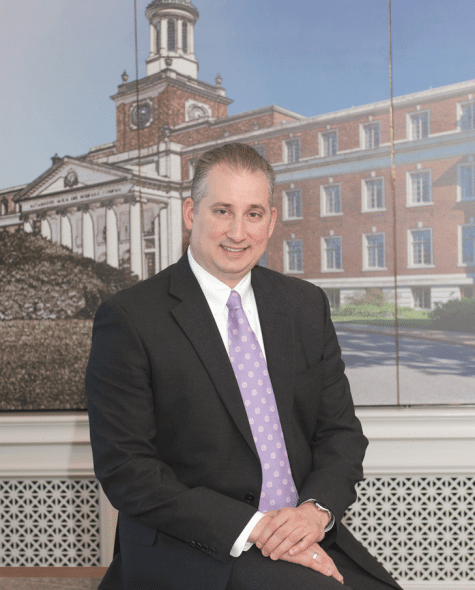
Nick Fyntrilakis, the company’s vice president of Community Responsibility.
Photo by Denise Smith Photography
Nick Fyntrilakis certainly wasn’t around for what’s known in local lore as the Great Flood of ’36, when the Connecticut River, swollen by large amounts of melting snow and persistent rains, spilled over its banks in mid-March, breaching dams, knocking bridges off their foundations, and destroying homes and businesses.
But he’s heard the stories — and seen some of the photos — related to how MassMutual Financial Group, the company he now serves as vice president of Community Responsibility, opened its purse strings, not to mention its doors (quite literally), to help Springfield residents weather that disaster.
“We sheltered people in our home office on State Street because they didn’t have any place to go — we had people sleeping on cots in a gymnasium that we had at that time,” he told BusinessWest, adding that he references that story often because it helps explain the company’s long history of community involvement and the many different forms it has taken.
Actually, that history goes back well before 1936, he said, adding that it is his unofficial job description to help write more chapters and also create new ways to support area cities and towns (especially Springfield, its home base) and improve overall quality of life.
And in recent years, he and others at the company have added to the portfolio of community involvement in some intriguing — and what many would consider non-traditional — ways, from the many layers of support provided after the devastating tornado in 2011, to several forms of assistance to the nonprofit agency DevelopSpringfield, which grew out of a State Street revitalization initiative and is now involved in a wide range of economic-development-related activities, to multi-tiered support for Valley Venture Mentors and other groups and initiatives created to foster and nurture entrepreneurial activity and, ultimately, create jobs.
These come on top of more traditional forms of support, such as scholarships for high-school students, mentoring and internship programs, funding of cultural institutions such as the Springfield Symphony Orchestra (SSO) and CityStage, and continued support for the many events staged by the Spirit of Springfield, including its annual Fourth of July fireworks display.
Add it all up, and it becomes apparent that MassMutual, a Fortune 100 company (number 96 in the last compilation, with more than $33 billion in annual revenue) is making a huge impact in the community, one that certainly epitomizes the phrase Difference Maker.
The numbers certainly support such a designation:
• In 2014, MassMutual supported 109 Springfield-area entities, spreading $4.8 million among them;
• The company’s aggregate support of DevelopSpringfield from 2008 to 2014 totals more than $4.3 million, including a $1.6 million contribution toward planning and rebuilding following the tornado;
• This past year, MassMutual awarded $1.6 million to Valley Venture Mentors over the next three years to support an accelerator program and created the $5 million Springfield Venture Fund;
• Over the past five years, the company has granted internships to nearly 500 high-school and college students. Job offers were extended to 23 of the participants, and 17 are still with the company; and
• Company employees mentor roughly 35 Springfield high-school students each year, and has had 175 mentor matches since the 2010-11 school year.
But such statistics tell only part of the story. Indeed, Fyntrilakis, as well as representatives for some of the agencies supported by MassMutual, say the company’s involvement goes well beyond check writing, and is part of broad strategy to strengthen the Greater Springfield area and position it for a better economic future.
Jay Minkarah, president and CEO of DevelopSpringfield, called it a “holistic approach,” one that he believes separates MassMutual from most other corporate donors.
“One of things that distinguishes MassMutual’s support for initiatives like ours is that these are not just a nod toward giving back to the community or a feeling that the company should support charitable endeavors,” he explained. “These are different. These are strategic investments in the community.”
Summing up the company’s philosophy involving community involvement, Fyntrilakis said it mirrors its corporate outlook as well, meaning a focus on the longer term.
“We make decisions that are 50-year decisions — we don’t worry about the next quarter or what the stock price is going to look like in two days; we’re worried about how our company is going to be faring 50 years from now so we can deliver on the promises we make to our policy holders,” he explained. “And as a result, that translates into the way we engage our community and our corporate responsibility. We want to ensure that our region is strong into the future so that we can have a workforce that can deliver on the things that we need for our policy owners, and we want to continue to thrive as an organization. As goes our community, so goes our ability to do things.”
In Good Company
Springfield Mayor Domenic Sarno told BusinessWest that any community fortunate enough to have a Fortune 100 company headquartered within its boundaries should certainly expect that employer to be a solid corporate citizen.
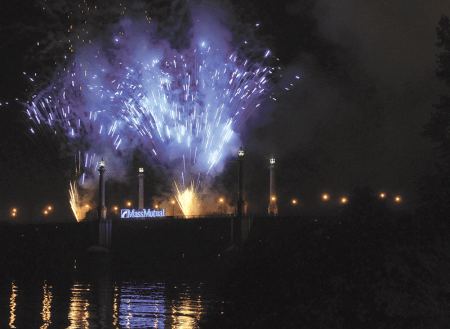
Springfield’s fireworks display now bears MassMutual’s name as lead sponsor — one of the company’s many examples of philanthropy in the category of community vitality.
But he and others are of the opinion that what MassMutual has done over the past 164 years goes above and beyond what could — and should — be expected.
“From the beginning, this city has always been able to count on MassMutual,” said Sarno, who has been in the corner office through a number of natural disasters and economic initiatives that the company has responded to. “It’s been a source of jobs, a force on economic development, and a philanthropic monster. And it should never, ever be taken for granted, because not every city has a MassMutual — and every city would love to have one.”
Fyntrilakis said the contributions made within the community are part of a corporate culture. “We are responsive and engaged and committed to serving our community,” he said, adding that, as the company has grown over the decades and expanded physically within other communities, that philosophy has followed.
“We support other communities where we have a presence,” he explained, “including Enfield, Phoenix, Memphis, and now Boston, where we have an office. We are engaged there as well.”
But the level of engagement is much higher in Springfield, he said, and for obvious reasons. The company traces its roots here, to 1851, when Caleb Rice, then an insurance agent working for Hartford-based Connecticut Mutual Life, decided to open a similar company — one owned by its policy holders — in Massachusetts. The company’s growth mirrored the nation’s — in other words, it expanded west, opening offices in several Midwestern states, and eventually reached the West Coast in 1868.
But it has always had Springfield has its base, with several headquarters facilities, including the current home on State Street, opened in 1927. Along with Smith & Wesson (because of that company’s strong brand recognition), it is the corporate entity most associated with the City of Homes.
“We have a much deeper involvement in Springfield, both from a financial perspective as well as a human-engagement perspective,” said Fyntrilakis, “in the sense of me serving on boards of directors, having our employees volunteer in the community on various things, and employees being generous with their own dollars to causes that we support or drives that we have for food or toys or things of that nature.
“It’s pretty special — it’s a meaningful degree of support,” he went on. “It goes along with being a Fortune 100 company, but it’s not just about how big we are or what people think we should do. It’s about what we think we should do and our own commitment.”
Fyntrilakis told BusinessWest that the phrase ‘corporate responsibility’ cuts across most all aspects of the company and includes employees in many departments and on many levels. Examples include everything from environmental responsibility — an important consideration for a company with such a large footprint, and one embodied in such initiatives as solar panels on the roof of the company’s headquarters and electric-car-charging stations in the parking lot — to employee benefits and training initiatives.
But perhaps the most visible component of corporate responsibility is the many actions that fall into the broad category of philanthropy or community involvement.
Historically, there are three main categories for this involvement, he said: education, economic development, and what the company calls ‘community vitality,’ and there are many examples of each.
School of Thought
Before elaborating on each area, Fyntrilakis first went into more depth about the philosophy that governs decisions on community involvement, because doing so helps explain directions taken by the company.
“We’re not ashamed to say that it’s important for our charitable activity to align with our business strategy,” he explained. “Because, in order for us to support charitable activity, our business needs to be strong.”
And one of the keys to achieving that strength (again, for the long term) is through a quality workforce and effective means of attracting and recruiting talent. Thus, many of the philanthropic initiatives within the realm of education involve initiatives that would help better train a workforce locally and also introduce young people to the company and its myriad employment opportunities. Meanwhile, initiatives within the area of community vitality are aimed at improving quality of life, but also to make the region more attractive to potential job candidates.
On the national level, he went on, many initiatives, such the LifeBridge and FutureSmart programs, are designed at enhancing the corporation’s brand and reputation, as well as empowering more Americans to become educated financially, which ties into MassMutual’s core business.
LifeBridge is a unique, free life-insurance program that helps children of income-eligible families pay for their education expenses if their insured parent or guardian passes away during the term of the policy, while the FutureSmart Challenge, conducted in conjunction with select NBA teams, stages interactive seminars at which students learn the importance of savings, career choices, staying in school and going to college, and how each has a profound impact on their future financial success.
Locally, within the category of education, said Fyntrilakis, the emphasis is on grades 6-12, with a focus on academic achievement and career pathways. Individual initiatives involve grants to specific programs to improve academic achievement, scholarships, mentoring students at the Springfield High School of Science and Technology and Putnam Vocational Technical High School (both located nearly across State Street from the company’s headquarters building), internships, job-shadowing programs, and others.
“Our hope is that we can create a pipeline for some of those young people to come and work at MassMutual,” he explained. “Many of our initatives are aimed at prompting the diverse, talented young people that we have to think about a career at MassMutual, and have a progression and a way that they can do that.”
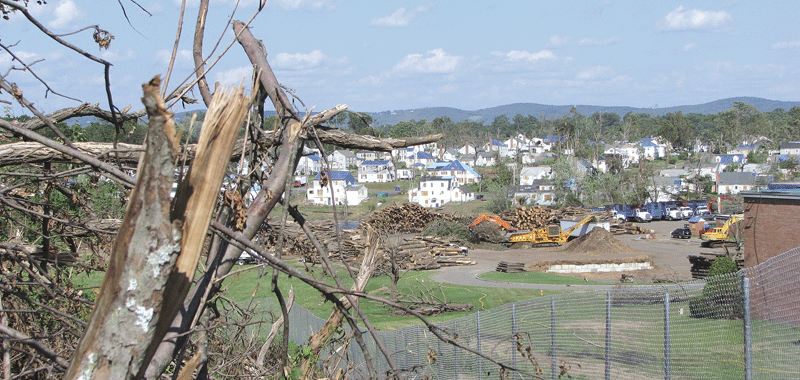
MassMutual’s support to Springfield after the 2011 tornado came in many forms, from a $1.6 grant toward the rebuilding effort to a loaned executive to help draft a recovery plan.
In the realm of community vitality, support is directed toward those events and institutions that will attract people to the city of Springfield and the region as a whole, said Fyntrilakis. That list includes everything from the recent Spalding Hoophall Classic, which brought top high-school basketball players from around the country to the City of Homes for a three-day tournament, to Bright Nights, the Fourth of July fireworks, and other events staged by the Sprit of Springfield; from the SSO to CityStage and the Springfield Museums.
As with programs in the realm of education, MassMutual’s initiatives in community involvement usually go well beyond simply writing checks.
Indeed, Audrey Szychulski, outgoing executive director of the SSO, said the company’s contributions to that institution go well beyond its sizeable season sponsorship (a six-figure gift). Indeed, several officers of the company sit on the orchestra’s board, including Chief Marketing Officer John Chandler, the current chair.
“Besides funding, MassMutual has a core group of people who interact with us on a regular basis,” she explained, adding that the company has also assisted with strategic planning, marketing initiatives, introducing the SSOP to young professionals new to the region, and even a complete IT analysis. “And when it comes to a donation of that size, it’s really an investment in our general operating needs to ensure that we really can serve our community. To them, it’s not just about the concert, but the whole experience and helping to ensure that we can touch as many people as possible through outreach initiatives.”
Response to the tornado of 2011, as well as the flood of 1936 and other natural disasters, does not fall neatly into any of the three main categories of community involvement, but it does reflect the company’s sense of responsibility to the city and its residents.
“It was an extraordinary event, and we certainly wanted to step in,” Fyntrilakis said, adding that support took forms ranging from an immediate $100,000 donation to the American Red Cross to a $1.6 million contribution to DevelopSpringfield for its Rebuild Springfield Fund, to a donation of his time and energy to co-chair the rebuilding effort.
Fueling Entrepreneurship
But if the tornado does fit into a category, it would likely be economic development, said Fyntrilakis, adding this is a relatively new classification of community involvement for the company — but one that has garnered most of the headlines in recent months.
The sharpened focus on this realm dates back roughly to 2008 and the Great Recession, he told BusinessWest, noting that the company recognized a need to reach out and help the city, which was, like many former manufacturing centers, struggling to reinvent itself and stimulate new job growth.
“We stepped back and we decided that we really needed to help the community leverage the assets it had and really take advantage of opportunities to grow and strengthen its economy,” he explained. “It’s great for us to be able to do lots of things charitably, but the reality is, the better the economy is, and the better the opportunities for people to get jobs and for the tax base to grow — that’s really what’s going to help strengthen the community a lot more than charitable contributions that aren’t going to facilitate that.”
This emphasis on economic-development-related support has taken more forms, starting with a State Street Corridor initiative that remains a work in progress. As part of that endeavor, the company helped facilitate creation of DevelopSpringfield, which Fyntrilakis called a “bricks-and-mortar organization” charged mostly with developing and repurposing underutilized properties, thereby revitalizing many of the city’s neighborhoods.
Current projects include several on State Street, including development of a supermarket, reuse of the former River Inn, razed in 2013, and redevelopment of the so-called Gunn Block. Other initiatives include renovation of the Ansel Phelps House on Maple Street and DevelopSpringfield’s commitment to build an innovation center in two long-vacant buildings on Bridge Street.
That facility will become the new home to Valley Venture Mentors (VVM), another of the Difference Makers for 2015 (see related story, page A28) and one of the focal points for MassMutual’s multi-pronged efforts to promote entrepreneurship and encourage businesses to locate within Springfield.
Overall, the company is investing $6.5 million in that realm, with $1.5 million going to VVM over the next three years for a startup accelerator — the first cohort of 30 companies started its six months of programs in January — and $5 million for creation of the Springfield Venture Fund, which will invest in startups located in Springfield or willing to relocate there.
In December, video-game developer HitPoint Studios became the first company to receive an investment ($500,000) from the fund, relocating from Amherst to a suite in 1350 Main St. in Springfield.
“We kept hearing how entrepreneurs were chasing capital, and capital was dictating where folks were locating — Boston, Cambridge, and San Francisco were putting money on the table and driving people to those communities,” said Fyntrilakis as he discussed how and why the fund came about. “Those are great cities with wonderful entrepreneurial ecosystems, but we felt that we had, through VVM and others, a good entrepreneurial ecosystem in Springfield, but the early-stage capital just wasn’t available, and folks were leaving to pursue capital elsewhere.”
By providing that early-stage capital, as well as other forms of support for entrepreneurship, MassMutual is taking a somewhat bold step in the arena of community involvement, one that should pay huge dividends down the road, said Jay Leonard, a board member at VVM and one of those who helped guide it though its formative years.
“MassMutual’s support of both the accelerator and the fund has been critical,” said Leonard, who serves as an economic researcher for one of the company’s subsidiaries, Babson Capital Management, and has served as a go-between of sorts for VVM and the corporation. “The best way to provide economic development is to invest in companies that are going to be successful, and MassMutual’s doing that.”
Minkarah agreed, and returned to that word ‘holistic’ to describe the company’s community involvement, especially with entrepreneurship initiatives.
“The company has provided support for the Springfield Innovation Center and Valley Venture Mentors, and it created the Springfield Venture Fund, and you can’t just look at any of these in isolation,” he explained. “When you look at that total package, here are very well-thought-out strategic investments designed to create a physical place that will support and foster innovation and entrepreneurship, support an organization that can actually run the program, and provide funding to support startups and high-growth companies that are innovative and entrepreneurial themselves.
“These are investments that MassMutual is making in the long-term economic health of the community,” he went on, “because they believe these are strategically positioned initiatives that can have a catalytic effect.”
Flood of Memories
It’s unlikely that anyone was using the word ‘catalytic’ with any degree of frequency back in 1936.
And that term probably wouldn’t be used to describe people sleeping on cots in MassMutual’s gymnasium because the flood leveled their homes.
But times change, in some ways, and that word is certainly appropriate now.
That’s because, while the company is basically continuing a 160-year-old tradition of community involvement, it is finding new, dynamic, and in some ways groundbreaking ways for it to evolve.
And that’s one of many reasons why it is a Difference Maker.
George O’Brien can be reached at [email protected]













